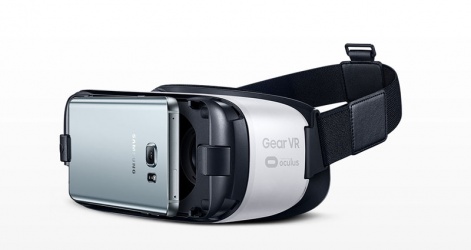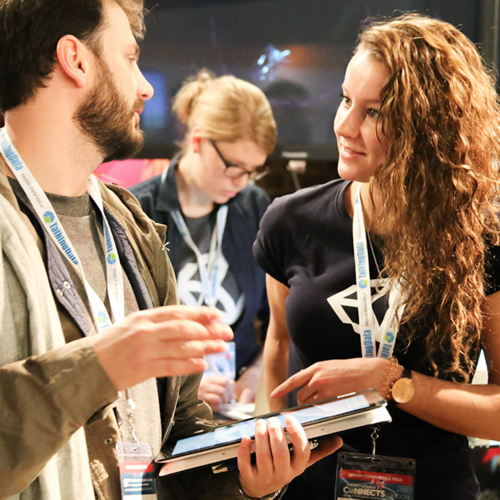We ask our industry panel - the brightest and sharpest VR professionals from around the world - one question about the VR industry, business, technology or trending stories every week.
Is mobile VR, AR and MR the poor relation to high-end VR? Do you think it’s just an affordable gateway drug to a more expensive habit, or a valid medium in its own right? What are its strengths and what needs to happen for it to succeed?
It's like explaining the taste of Cola to a Martian!Jonathan Wagstaff
Jonathan Wagstaff, Country Manager - UK & IE at CONTEXT
"Mobile is serving as an excellent introduction to VR, and the affordability of HMDs is truly fantastic. Given that the Rift and Vive are based largely on mobile display and gyro technology, this comes as no real surprise. Right now however, mobile VR - at least for gaming - is a good few years behind the top-end HMDs, simply because the GPU capabilities of most smart phones still have a long way to go. That being said, with Moore's Law being what it is, and the progress both AMD and Nvidia have been making recently, mobile graphics might not be miles behind.
“I've read reports from some analytical companies which ignore sales of mobile HMDs, which I think is a huge mistake. The first experience of VR can have a profound impact and why would you expect any consumer to spend $600+ on something they've never tried? It's like explaining the taste of Cola to a Martian!”

Simon Barratt, Director at Barog Game Labs
“Mobile devices are never going to be as powerful as a device you can plug into the wall, simply due to battery and thermal limitations. We are however at a point where the hardware is sufficient to have some very good experiences, especially when the software has been optimised accordingly.
“I believe the best applications of AR and MR are going to be in a mobile form that can travel anywhere with us. We just need to continue hardware and software iterations and to ensure it’s being marketed well. The current main challenge with mobile is the lack of tracked controllers, though we’re starting to see some solutions appear at CES.”
Mobile VR will be will be the centre of the VR, AR and MR business world.Juergen Funk
Juergen Funk, Managing Director at highlewelt GmbH
“Mobile VR, AR and MR are a door-opener for the mass market - and a cash cow for developers and publishers. Mobile is sufficient for many use cases and it will be enhanced with high-end technology features like sensors or simple bluetooth controllers.
“Mobile is more than just a gateway drug; it will be the centre of the VR, AR and MR business world. On the other side, high-end VR devices will be a valid medium for all applications and use cases that require loads of data, processor speed and graphic controller power. Just take the VR experience of a car requiring 10 Million+ polygons to be rendered. In essence, the difference between mobile and high-end is mobility and ease of use versus immersive quality close to reality.
“Its further success depends on applications that complement and enhance our real life, which is why we developed a way for consumers to view live and streamed TV in VR. We need to introduce social interaction and multi-user features to overcome the issue of isolation and disconnection.”

Dean Johnson, Head of Innovation at Brandwidth
- Short Term
“No one wants wires, but we currently accept that all the heavy-lifting is done by PCs and games consoles. They’re expensive if you need all the kit from scratch. That’s not to say quality phone handsets are cheap, but the lack of external peripherals, light leaks and lens distortion can be unacceptable issues.”
- Medium Term
“Everything will have to be wireless - it’s just a case of whether the processing is managed onboard (mobile) or streamed to the headset (PC and console). We don’t view our mobile as the poor relation to a landline, so the experiences will be the same."
- Long Term
"No one will want wires or screens or earphones or choices between VR and AR. We’re looking at a no-compromise future where all our realities are experienced in-head via optic nerve and bone conduction, with the processing - and heat! - managed on an external mobile device."
It is obvious that the ultimate answer to VR/AR/MR is on the mobile side.Changyin (CY) Zhou
Changyin (CY) Zhou, CEO and co-founder at Visbit
“If we think of user experience, it is obvious that the ultimate answer to VR/AR/MR is on the mobile side. High-end desktop VR is simply a temporary gateway to mobile VR/AR/MR until the various technical problems in some applications get solved. In fact, some low-hanging-fruit VR applications, like 360 videos, currently run almost as well on mobile.
“In order for mobile VR/AR/MR to succeed and offer the truly immersive experience users crave, major technical difficulties including processor speed, battery life, algorithms, HMDs, tracking and wireless, must be overcome.
“In their current state, both desktop and mobile VR have trade-offs; in desktop VR/AR/MR, the user must sacrifice convenience and mobility, while in mobile, some functionality and performance is sacrificed. Only in specific applications can we tell which is the wiser compromise.”













